What is it like to go to work every day on the Acropolis and be in direct contact with the marble monuments of Classical Athens? To have the cool Pentelic stone actually in your hands, as part of the daily fulfillment of your duties? Or to know that you and your colleagues are responsible for the care and eternal well-being of Greece’s foremost archaeological site?
The specialists, skilled craftsmen and administrators that compose the team deployed on The Rock in central Athens by Greece’s Acropolis Monuments Restoration Service (YSMA) are a diverse, multi-disciplinary crew, many of whom are there because of their passion for history, science and tradition.
Often faceless to the general public, unheeded amid the daily tides of visitors, these hardworking individuals lead unusual lives, as they strive in their respective professions to follow in the footsteps of their ancient counterparts who similarly frequented the hilltop sanctuary more than 2,400 years ago.
In the Parthenon, among YSMA’s highly-trained scientific staff, is architect Lena Lambrinou, who came to YSMA in 2000. She recently spoke to Greece Is about her background, her experiences over the past two decades and what drives her to study, protect and present the Parthenon’s precious, time-worn ruins.
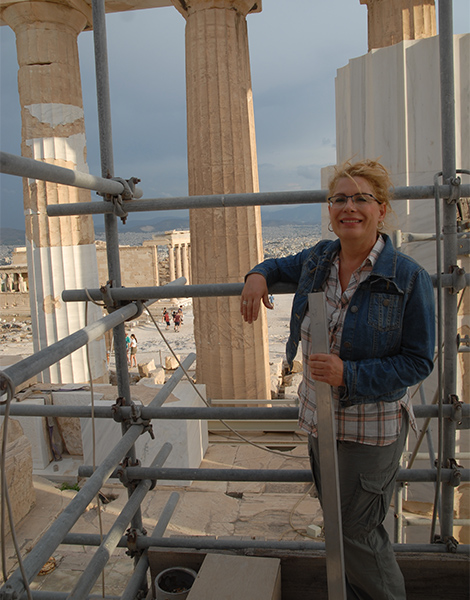
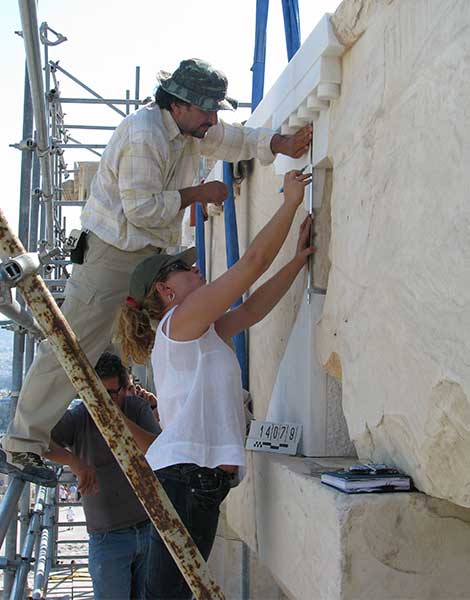
A dynamic workplace
Lambrinou’s past and current activities on the Acropolis are a testament to the unique character of YSMA, which although a branch of the public sector, is far from a typical bureaucratic organization; its members, as specialists in their fields, are expected to excel in a range of tasks including research, publication, practical worksite and office operations, scientific illustration, academic interaction at conferences and public outreach. Lambrinou admits there are often too few hours in the day, but in the end she appreciates a working environment that inspires her, she says, to do her job better.
The restoration of the Acropolis is divided into many individual projects that run concurrently or consecutively. The work needed to preserve, maintain and better understand the monuments is vast and everyone’s tasks over the years have been numerous.
Lambrinou notes they are now in the third major phase of interventional works, as the first were launched in 1834, the second in 1894 and the current in 1976.
Her first major assignment was to prepare the restoration study for the Parthenon’s north colonnade (2001-2005). She then oversaw the actual restoration, specifically of the columns and architraves (completed 2009), as well as the columns’ final fluting (2009-2013).
Meanwhile, there was a collaboration in the Pronaos (east porch, 2000-2004), followed by the still-ongoing final fluting of its restored columns (since 2011). Her recent work also includes the intervention study for the west wall of the temple’s cella (inner sanctum). For the future, she is slated to oversee the restoration of the cella’s south wall, based on a study by former team members Nikos Toganides and Kathy Paraschi.
Outside the Parthenon, Lambrinou is currently involved in preparing the Old Acropolis Museum building for its new role as a collection point and exhibition space for ancient architectural fragments and significant modern artifacts from the Acropolis’ restoration works. Soon, she says, visitors will be able to learn more about past restoration methods, some now not so acceptable.
For example, one display will be a “column capital” prepared by Nikolaos Balanos almost a century ago to replace a missing north-colonnade capital in the Parthenon (the missing original is now in the British Museum). Balanos creatively used a new-marble core, to which he attached ancient capital fragments in an attempt to reproduce a full column capital. Today, this extraordinary creation might be considered more a piece of art.
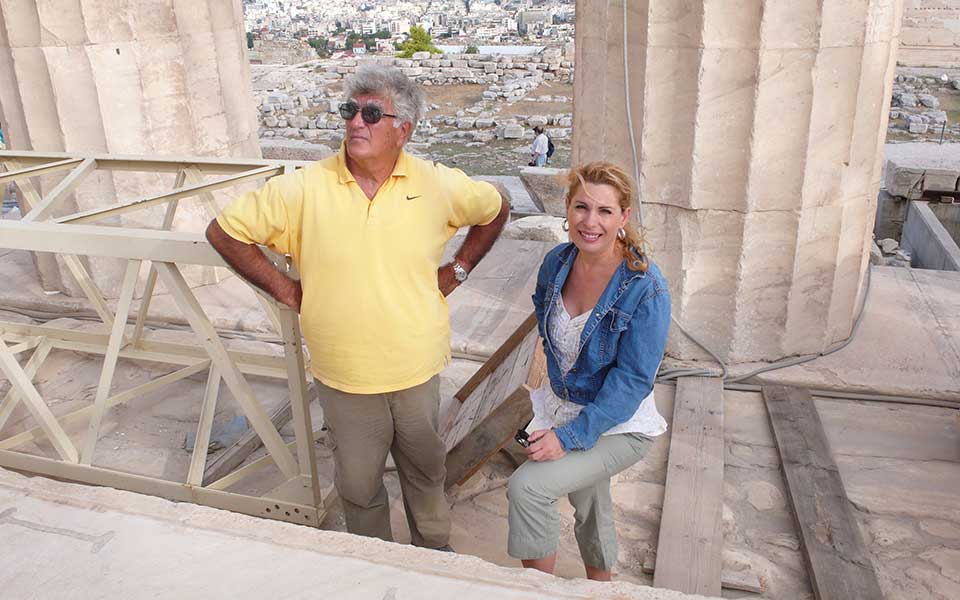
The legacy of Balanos
YSMA’s primary focus in the Parthenon is the repair and correction of the restoration works carried out by Nikolaos Balanos in the late 19th and early 20th centuries. But what was the problem with his restoration? Does he deserve all the “bad press” he has received?
Lambrinou demurs: “We have to approach these past personalities, Balanos, Arthur Evans and others, through an understanding of their era. Although criticized for using concrete and iron, Balanos was actually a very innovative restorer. He studied in France at the famous National School of Bridges and Roads (ENPC), in the late 19th century, and was definitely influenced by new engineering currents in Europe during that era. One of the most innovative materials then appearing was concrete internally reinforced with iron rods.”
While a student, “Balanos saw this material presented at two international fairs held in Paris in 1878 and 1900. So, this was a fertile, optimistic atmosphere filled with new ideas. And reinforced concrete was revolutionary: quick, cheap, usable anywhere and it didn’t need specialized personnel for its application. It was swiftly adopted for bridges, houses and large public structures.”
Cement had already been employed on the Acropolis in the late 1800s, recommended by the architect Francis Penrose, then-director of the British School at Athens (1886-1887, 1890-1891). Reinforced concrete, however, was introduced to Greece by one of Balanos’ fellow-Greek classmates, who used it for two new bridges over the Kifissos River (1901, 1902). Ten years later, Balanos proposed the new material for reconstructing the Parthenon’s north colonnade.
Despite resistance from Athens’ conservative archaeological community, he was able in 1922 to begin his proposed intervention. Unlike the Parthenon’s ancient builders, however, he could not shield the iron with lead to keep out moisture. Corrosion followed, and cracks eventually appeared.
The damage to the original marble, and the fact that the architectural intelligentsia, by the 1970s, was no longer so enamored with the aesthetics of concrete, led to proposals for the new Acropolis restorations. “In retrospect, though,” Lambrinou states, “Balanos was a revolutionary engineer, rather modernist; the first to use internally reinforced concrete in the restoration of ancient Greek monuments. After Balanos, Arthur Evans also began using this material in the 1920s at Knossos. Today, we use different materials – genuine marble and non-corrosive titanium rods – while also trying to be more accurate and authentic in our work and results.”
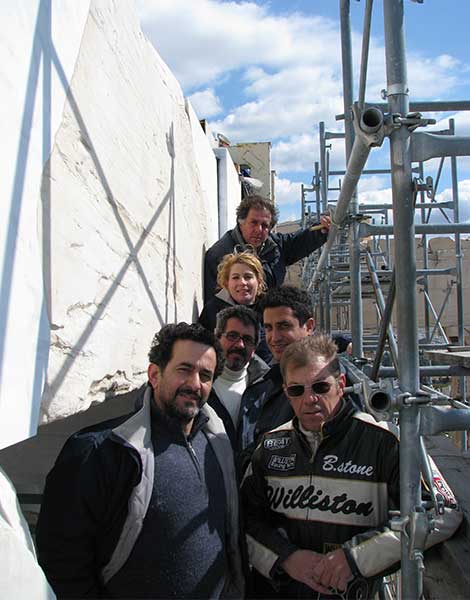
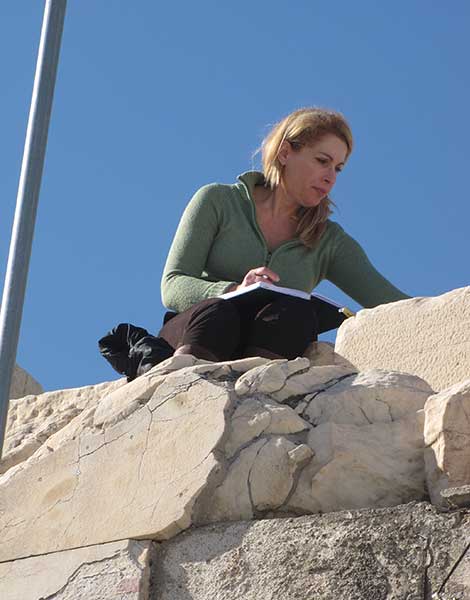
Generations of marble masons
The Acropolis restorations are a source of their own traditions. YSMA’s marble masons are trained on Tinos island, at a long-established school for traditional marble carving.
In the 1950s, the American restorers of the Stoa of Attalos in the Athenian Agora hired a crew of masons, all from Tinos. “The youngest of these went up to the Acropolis in the mid-70s to work on the Erechtheion,” Lambrinou says. “They were wonderful marble masons, very capable, started their work at dawn and didn’t come down from the scaffolding until the mid-afternoon. They were very devoted. Some of them were the grandfathers and fathers of the masons we have now. Three generations! They were bringing their sons and grandsons to work, teaching them the traditional methods. Consequently, the younger masons today have also become very capable.”
Much like an age-old guild, the Acropolis marble masons work in groups, where they have their own work ethics and a hierarchy among their ranks. They follow and obey their chief, who passes his knowledge on to them, like a medieval master craftsman with his journeymen and apprentices.
“In the beginning, the idea for the Acropolis was to do everything by hand. But this was a very ideological, romantic approach. Today, we have timetables, work programs and deadlines. So, it’s impossible to work completely by hand,” Lambrinou explains. Therefore, besides hammers and chisels, the masons now use power tools and electrical machinery, while off-site collaborators also employ laser scanners and cutters. Nevertheless, the carving of new additions, the final treatment of new-marble surfaces and the carving of flutes are procedures still performed by hand.
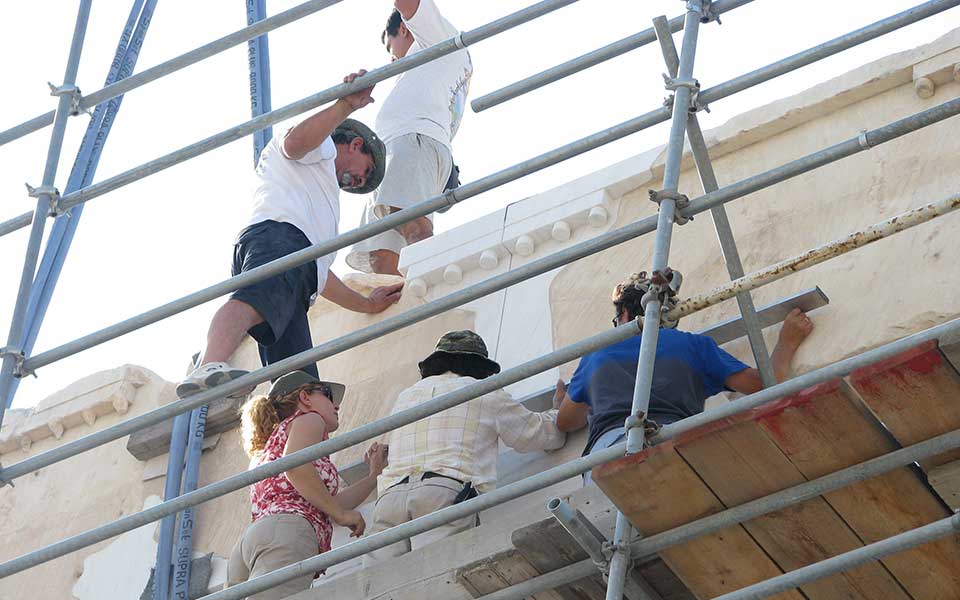
Restoration philosophy
How did Lambrinou herself become a restorer? “I’ve always been interested in archaeology and historic preservation,” she tells us. “I actually did two degrees, in architecture (National Technical University of Athens) and archaeology (National and Kapodistrian University of Athens). Later, as a master’s student in England [York], I studied the historic preservation of post-medieval Mani, in the Peloponnese, compared to similar practices in Northumbria.”
More recent interests, stemming from her doctoral research in Athens, include the Roman repair of the Parthenon (the temple’s first restoration – when it was already considered a precious relic!); the evolving Doric style in later Classical and Hellenistic times; and the theory or philosophy behind contemporary restoration practices.
She also recalls her adventures working for the Athens Metro (1995-1997), where she was able to see firsthand the underground aqueduct of emperor Hadrian, while supervising the documentation of archaeological excavations at the Kerameikos, Acropolis, Syntagma and Evangelismos stations, as well as in the tunnel beneath the Zappeion and National Gardens. Through these experiences she gained a greater appreciation for preservation and the principles of archaeology and restoration.
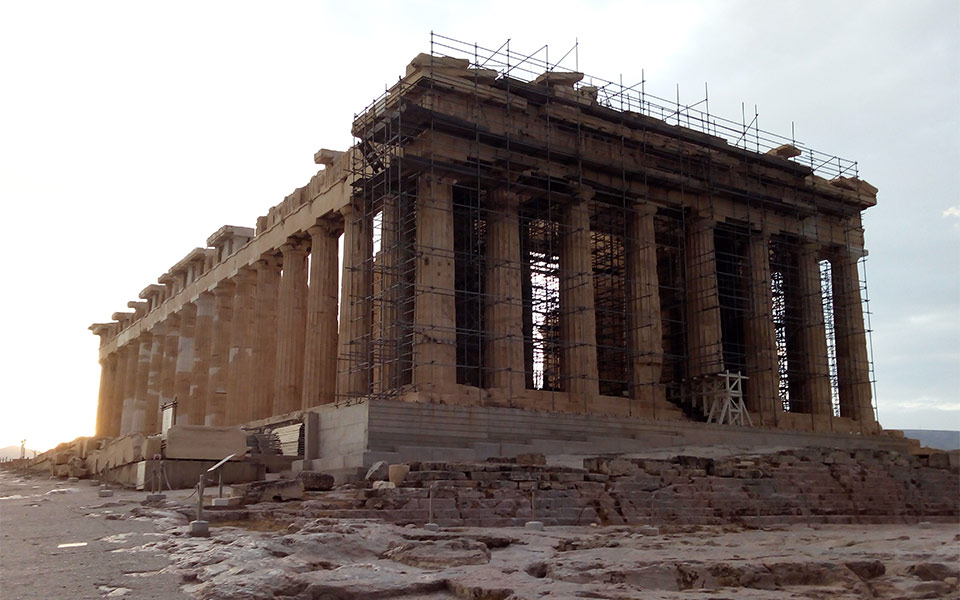
In approaching interventions in the Parthenon, she suggests the restorers’ aim is to recreate the “harmony” of the ancient building; to return it to its original, correct shape, so that visitors can better comprehend and appreciate the temple’s design and artistic qualities.
Most essential are the structure’s long-term stability and its authenticity. “We use the original material as much as possible, trying to keep new material to a minimum. We don’t want to reconstruct the entire building, because the end result wouldn’t be authentic. We always have to be cautious about the percentage of new material added.
“The north colonnade project had a new-material percentage of 12-13%, in line with international standards. Cases where this percentage has increased, however, such as in the Pronaos restoration (25%), have met with resistance and test the limits of previously established principles for Acropolis interventions.
“Comprehensibility of ancient monuments for visitors is increasingly a priority in Greece. But in proposals where we have 50 or 60% new material, I believe this should be questioned. Following established standards, to maintain authenticity, is what distinguishes restoration from reconstruction.”
Upcoming Parthenon interventions include the cella’s flanking walls, but also perhaps the reconstruction of several bases for dedicatory offerings – whose original material was found built into the temple’s Roman repairs. We can’t help but ask: Could one such base be that of the famous Athena Polias statue, perhaps with a bronze recreation of Athena herself placed upon it?
Lambrinou laughs: “Very American I would say. They could do it in Nashville,” where the Nashville Parthenon stands. “No, we haven’t enough preserved material for that. But a small partial reconstruction might be okay… Why not?”











